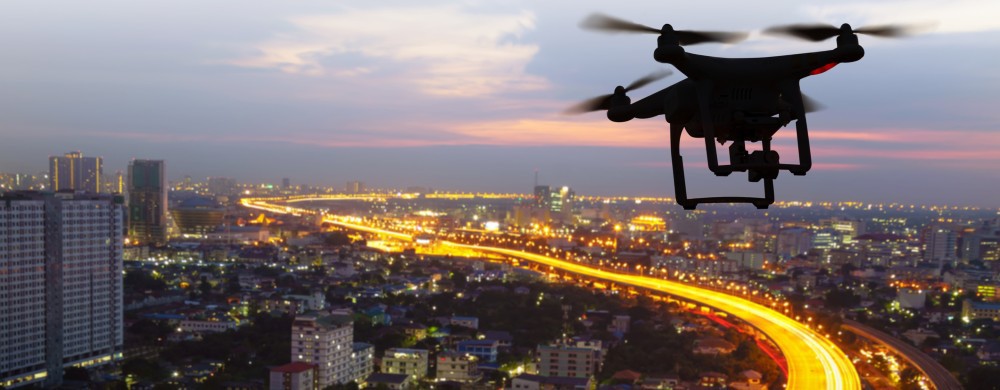The Role of Robots in Power Outage Restoration

No matter the duration, power outages are inconvenient to everyone who experiences them. Residential areas losing electricity during extreme weather conditions expose people to health and safety risks. Factories, companies and utility sectors also incur losses due to downtime caused by disruptions in operations and critical repairs, spurring them to look for breakthrough solutions.
New technologies like robotics can assist and augment the power sector, restart the grid and prevent further losses. Here are several specific applications of robotics in power restoration and outage prevention.
1. Locate and Identify Faults
Electrical networks are massive, and locating the root cause of a power outage is often like finding a needle in a haystack. It can take hours and intensive manual labor to restart a power grid. Electricians must react quickly and find the cause of the outage to restore energy to homes, buildings and public infrastructure. Fortunately, high-tech robots can support fault localization efforts.
Automated robots can quickly locate disruption sources and prevent power outages in the future. They leverage historical data and algorithms to identify significant problems in an electrical network and address them using updated protocols and solutions. Efficient diagnosis tools and computing capabilities ensure robots catch underlying or persisting issues.
Robots bring innovative solutions to common but often overlooked problems in the power sector. Thanks to their machine learning and artificial intelligence capabilities, they can traverse high-voltage power lines and pull cables, inspect vital equipment like transformers in substations, and provide immediate repair and restoration during emergencies.
2. Automate Preventive Maintenance
Like any other facility or equipment, electrical grids need regular maintenance to stay in tip-top shape. Electricians do routine checkups on essential components and systems to keep the grid working efficiently and at total capacity. Robotics can help improve electrical work processes in many ways.
High-tech robots can assist electricians in equipment assessment. Like health checks for electrical facilities, regular equipment checkups enable professionals to find underlying issues that need immediate attention. Old age, weather damage, and wear and tear are some of the most common challenges in equipment maintenance. Robots can help electricians make accurate assessments to issue work orders for preventive maintenance and equipment reconditioning and remanufacturing to reduce costs and enhance the durability of machinery.
Robots also support highly skilled workers in monitoring infrastructure performance and durability. High-tech robotics can analyze system data, detect anomalies and pinpoint issues before they disrupt critical operations. Power companies can use this actionable data to understand the root causes of power outages and prevent them from happening in the future.
3. Facilitate Remote Repairs
Most of the time, restoring power to a grid involves repairing critical equipment. Electrical facilities may encounter loose connections, damaged wires and broken components. Robots can assist electricians in restoring power by accessing dangerous and often hard-to-reach areas to facilitate repairs.
Sophisticated robots fitted for remote control and operation augment electricians’ abilities in the field. Through robotics, workers can assess and repair damaged essential equipment from a distance, ensuring their safety and maximizing efficiency. Collaborative robots can replace faulty parts and damaged cables with help from highly skilled and trained operators. Some can even do all these things without human intervention, further improving productivity and reducing downtime of affected power grids.
Time is a valuable resource in power restoration. The utility sector must act quickly to address issues anywhere in the electrical network. Leveraging robotics technology in infrastructure and equipment repairs saves time, reduces costs and improves project quality simultaneously.
4. Safety Improvements
Electricians are part of an essential workforce. They maintain grids to ensure homes, businesses and vital infrastructure have enough power for day-to-day activities. However, they encounter significant risks in their line of work. Workplace injuries, fatigue and exhaustion are common occurrences in the profession. Robotics helps mitigate these risks using technology.
Many autonomous robots take on repetitive tasks in the field, like equipment repairs and maintenance. They can also access dangerous and remote locations on behalf of engineers and electricians, significantly reducing workplace accidents and injuries. Robots can perform essential functions that would otherwise be too risky for human workers, preventing harm and providing uninterrupted electrical service simultaneously.
5. Pattern Prediction
The power sector already uses robotics to support grid health and enhance performance through pattern prediction. Combining machine learning, algorithms, and AI tools enables robots to consider internal and external factors to predict events that could cause service interruptions. Severe weather events like storms, heat waves and heavy snowfall can compromise system performance and resiliency. Robotics can detect potential events using high-quality data and implement relevant protocols to prevent power outages and restore electricity to affected areas.
Pattern prediction increases network reliability. It helps electricians and engineers identify potential risks and prepare for future emergencies so power grids can keep working even with heavy demands or in less-than-ideal conditions. Advanced robotics can also use pattern prediction to incorporate automated responses in contingency plans to reduce downtime and make electrical networks more resilient to outages.
Prevention is better than cure when dealing with power outages. Minor hiccups can quickly escalate and turn into massive problems if left unchecked. Robots, automation and artificial intelligence can recognize and manage risks before they turn into costly or fatal disasters.
Future-Proofing the Power Grid With Robotics
As technology demand grows, so will the need for more robust electrical networks. Robotics can help power companies and the utility sector face developing challenges in the industry and make outages a thing of the past.
Thanks for helping to keep our community civil!
This post is an advertisement, or vandalism. It is not useful or relevant to the current topic.
You flagged this as spam. Undo flag.Flag Post


